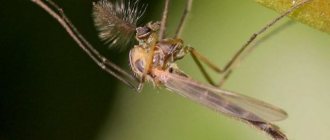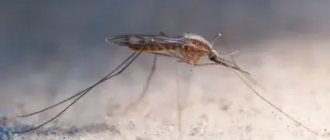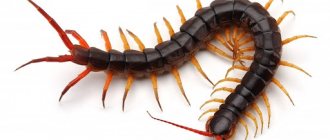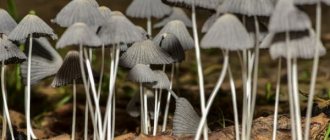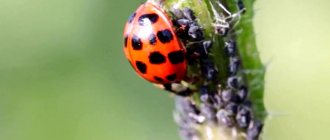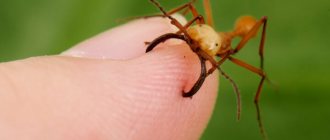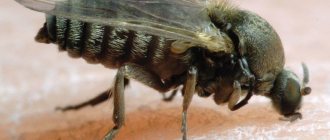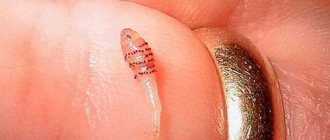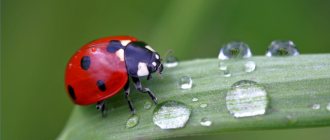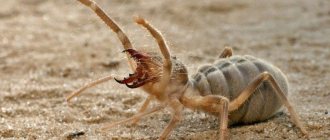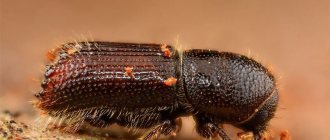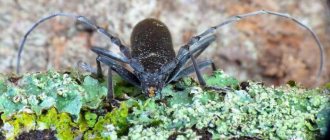Description of the bell mosquito, its activity and life cycle. Do mosquitoes bite? The benefits of twitchers for nature. How to deal with chironomids using chemical, mechanical, or folk remedies?
Chironomid is a bell mosquito that belongs to the Diptera family. They are distinguished by the inability to eat food because they have an underdeveloped oral apparatus. Bell bell larvae consume microorganisms and detritus. Some of them may belong to the order of predators.
This type of mosquito lives near water bodies, their favorite place is thickets of reeds. It is worth noting that they do not pose any danger to people.
Peculiarities
The twitch mosquito, also called chironomid, belongs to the order Diptera. Due to the fact that an adult mosquito has an underdeveloped mouthparts, it cannot take food. But the bell mosquito larva feeds on microorganisms and detritus. Some of the individuals may be predators.
For humans, this species of mosquitoes, which live in reed thickets and ponds, does not pose a danger.
These insects are hardy, so they are found in many countries. Some subspecies live in Antarctica. They are not afraid of severe frosts or heat. Residents of Antarctica are distinguished by their dark color, which eliminates the possibility of death in severe frosts. They are classified as wingless.
Zvontsy are green mosquitoes, the body size does not exceed 1 cm. Sometimes the color has a gray, yellow or black tint. The jerk family has more than 3,000 species. These are quite hardy individuals that can be found almost anywhere in the world.
They are representatives of the largest population in Antarctica. Also, green mosquito larvae are able to survive high temperatures, heat, frost and complete drying. They have an amazing ability to survive.
In literary sources, this species can also be found under the name of jerks or chironomids. They began to be called jerks due to their behavior. These individuals never rest on their front legs.
During landing, the bell stands on its hind legs, and the front legs are always directed upward. As a result, the body constantly twitches. For this, green mosquitoes received their second name. Chironomidae is the Latin name for representatives of Diptera.
The bells got their name because of the characteristic sound that occurs as a result of the high frequency of flapping of their wings.
Is there a danger to humans
The body of the bell mosquito is smaller than other individuals of the order Diptera. Moreover, due to the underdevelopment of the oral apparatus, this insect does not have to feed at the imago stage. Therefore, bells, which are called chironomids, do not bite.
Squeakers or common mosquitoes are bloodsuckers. Their females can be carriers of many infections.
Appearance of an insect
The jerk mosquito can have various external features. This diversity is due to the wide habitat of individuals. Looking at the photo of the bell mosquito, one can note the different shape of the head, features of the aircraft, different lengths of the antennae, but otherwise the body structure is the same as that of all its fellows.
An adult bell mosquito is similar to an ordinary mosquito, or culex (genus Culex), but differs from it in its larger size, extremely densely feathered antennae and a peculiar manner of sitting, with its front legs extended forward, which it continuously twitches.
Bell mosquitoes have a gray, greenish (Chironomus plumosus) or yellowish body and a yellow abdomen with dark spots. The body size is 9-12 mm, which is larger than that of the Culex (7 mm). When a mosquito sits, it rests only on its middle and hind legs, while its front legs serve as an organ of touch - the mosquito keeps them raised and continuously twitches them. Apparently, in this way they detect the approach of danger.
The horny organs of bell mosquitoes are not developed (both males and females), so they do not feed and live only 3-7 days. Naturally, they don’t suck blood either. The easiest time to see bells is during the breeding season, when they form swarms near water bodies, above bushes, haystacks, tree tops and other objects towering above the general area.
If there is a person nearby, the swarm will spin right above him. The swarm produces a thin melodic ringing that can be heard from afar. Inside the swarm, mosquitoes either suddenly fly up or passively fall down.
The main functions of mosquitoes in the natural environment
By studying reference books, you can learn about several important tasks that are assigned to the presented species of insects:
- Bloodsucking pupae that float to the surface of the water are food for fish and cold-blooded animals;
- Mosquito larvae consume tiny microorganisms, an excess of which can lead to changes in the bacteriological composition of the reservoir;
- The imago (adult) acts as a delicacy for swallows, sparrows, and other small birds;
- During the period of their life, insects consume a number of microelements, and when they die, they transfer iodine, iron, cobalt into the soil, thereby increasing its level of fertility.
Life cycle
The mosquito mosquito has a very short life cycle, from 3 to 7 days. These insects were named bells because male mosquitoes gather in swarms and make a ringing sound while flying in the air. This is how they call females. Hearing the ringing, the females fly into the flock, and within a few seconds fertilization occurs.
Another name for bells is chironomids.
Another name is the jerk mosquito, which the insect received because of its specific landing. When sitting on the surface, mosquitoes rely only on the middle and hind pair of legs. Since the front legs are raised, the mosquito twitches.
The jerk mosquito has a very short life cycle. Individuals spend most of it in the larval stage.
After reaching sexual maturity, adults can live for about 2-3 days. The bell larva leads an active lifestyle. It is found in any type of reservoir, manure, trees, and many other moist substrates. Most of the individuals feed on the filtrate of silt plants.
They settle in various places:
Why is the centipede mosquito dangerous?
- In reservoirs.
- On fruit and wild trees.
- In silt or wet soil.
- In manure.
As food, the larvae use filtrate, which is formed by silt vegetation, as well as microorganisms present in the soil. Adult green mosquitoes form a clutch of eggs all once, after which they die immediately.
For laying, pests select those places where there is a wet substrate or silt. To protect the eggs, a peculiar gelatinous substance is used that covers them. Entomologists use this feature to distinguish a clutch of chironomids.
The adult female dies immediately after laying eggs. The place where the successor of the family lays eggs is silt. A distinctive feature of the clutch of green mosquitoes is that all the eggs are covered in a common gelatinous mass.
After hatching, the larvae turn red. This is due to the presence of hemoglobin, which allows representatives of the bells to live even in conditions with a limited amount of oxygen. The lifespan of male mosquitoes reaches 2 years, but this is in rare cases. Most bells die within a few days of growing up.
This is due to the immaturity of the oral apparatus, which does not allow adult jerks to consume any food. Sometimes bell ringers at the adult insect stage use honeydew or flower nectar as a food source, which allows them to prolong their life.
Classification
Includes several subfamilies:
- †Aenneinae
- Aphroteniinae
- Buchonomyiinae
- Chilenomyiinae
- Chironominae
- Diamesinae
- Orthocladiinae
- Podonominae Podonomius robustus
- lived in the Jurassic period in Mongolia[4].
Some births
- Calopsectra
- Chironomus
- Cretodiamesa
- Cricotopiella
- Cricotopus
- Diamesa
- Electrotenia
- Eurycnemus
- Libanochlites
- Manlayamyia
- Metriocnemus
- Nomochirus
- Palpomyia
- Sendelia
- Smittia
- Spaniotoma
- Tanypus
- Tanytarsus
Reproduction
These green colored insects swarm in very large numbers to mate. Female chironomids then lay their eggs in water, on aquatic plants, or in moist soil near water sources. Since the life cycle of bell mosquitoes is quite short, about a month, up to 5 generations of these insects reproduce over the summer.
Mosquitoes perform more than 600 wing beats per second
Of course, the number of generations depends on the temperature and humidity at the breeding site. The life cycle of bell mosquitoes begins with the breeding season. On quiet, warm spring and summer evenings in the meadows, along the banks of large and small bodies of water, you can hear a thin, piercing ringing, and if you look closely, you can see its source - a swarm of some kind of mosquitoes spinning in the air.
These are male bell mosquitoes. Sometimes such swarms reach several meters in width and stretch for hundreds of meters. No wonder they make such a noise. There are a huge number of mosquitoes in the swarm - tens, or even hundreds of thousands.
The swarm only oscillates smoothly, and the individual individuals in it either suddenly fly up or fall down and at the same time emit a sharp ringing sound that is absent during normal flight. This ringing occurs only when the mosquito's wings beat more than 594 times per second.
The ringing is made specifically to attract females, who, during swarming, sit hidden among the vegetation and fly into the swarm only for a few seconds, flying out of there already fertilized. After copulation, female bells lay their eggs in water, encasing them in a gelatinous transparent substance.
These tiny jelly-like formations, with yellow, brown or black oblong eggs visible in them, have different shapes in different types of jerks: a round lump, an oblong sausage with a spiral arrangement of eggs, a long double cord that is attached to the substrate, etc.
Clutches of bells of the genus Chironomus contain from 1 to 2 thousand eggs. The eggs hatch into larvae, which after birth and before the first molt are grayish or colorless, and then acquire a red or greenish color.
Under favorable temperature conditions and an abundance of food, the development and growth of larvae occurs very quickly. Thus, the larvae of the bell bell, or bloodworm (Chironomus plumosus), emerging from spring clutches in shallow and warmed reservoirs, reach a length of 15-16 mm after 15 days.
Like blood-sucking mosquitoes (family Culicidae), chironomid larvae molt 3 times and go through 4 stages. Each age has its own head width. The head of newly molted larvae is disproportionately large.
The length of the soft body of the larva changes as it grows during the stage, depending on the abundance of food. For example, a poorly nourished larva of the 4th instar (4th instar) may be smaller than a well-nourished larva of the 3rd instar. Soon after molting, normal head-body relationships are restored.
When the larva goes through all stages of development and matures, the process of pupation occurs. Mature larvae pupate at the bottom of the reservoir in silt tubes. Their body is saturated with hemoglobin. The presence of a large amount of hemoglobin allows the bell mosquito larvae to survive even if the amount of oxygen is minimal.
To ensure the survivability of the worms, they were sent into space. More than 75% of the insects survived.
After about 4 weeks, the larvae are ready to turn into pupa. The larvae remain in the pupal stage for 48 hours, after which adults hatch. Adults live 5-10 days and do nothing except mate and lay eggs.
In natural and man-made water sources, chironomids are the main inhabitants. The favorite breeding grounds for these insects include any amount of water. Examples include lakes, settling ponds, water oxidation ponds, domestic lakes and ponds, and slow-moving small rivers.
If there are enough nutrients in the water, up to 4000 larvae can be found on one half meter of the bottom. During the summer, it is quite common for thousands of adults to be born for every square meter of water surface at night. Such a number of bell mosquitoes can even lead to economic problems.
Notes
- ↑ 12
Life of animals. Volume 3. Arthropods: trilobites, chelicerates, trachea-breathers. Onychophora / ed. M. S. Gilyarova, F. N. Pravdina, ch. ed. V. E. Sokolov. — 2nd ed. - M.: Education, 1984. - P. 396. - 463 p. - Catalog of Life: [www.catalogueoflife.org/col/browse/tree/id/17002805 Family Chironomidae] Retrieved March 29, 2014.
- Andersen T., Baranov V., Hagenlund LK, Ivković M., Kvifte GM, Pavlek M.
[journals.plos.org/plosone/article?id=10.1371/journal.pone.0152884 Blind Flight? A New Troglobiotic Orthoclad (Diptera, Chironomidae) from the Lukina Jama – Trojama Cave in Croatia] (English) // PLOS ONE: Journal. - PLOS, 2016. - Vol. 11(4). — P. 1-15 (e0152884). — DOI:10.1371/journal.pone.0152884. - ED Lukashevich and AA Przhiboro. 2011. New Chironomidae (Diptera) with elongate proboscises from the Late Jurassic of Mongolia. ZooKeys 130:307–322
- Cornette, Richard
Kikawada, Takahiro
The induction of anhydrobiosis in the sleeping chironomid: current status of our knowledge // IUBMB life: Journal article. - 2011. - No. 63. - P. 419-429.
Benefits and harms for people
Many species of the chironomidae family are often confused with mosquitoes because many of them are very similar to the latter. Jerking mosquitoes have a “humpbacked” body that is black, gray or brown. The larvae of these insects are an important part of the food chains in ponds, streams and lakes.
These insects do not bite, but can be very annoying due to the fact that they swarm in large numbers. Bell mosquitoes are most active at night, appearing just after sunset. Swarms of these insects can produce a loud buzzing sound that can be heard over very long distances.
The mosquito does not cause any harm to humans. Since he has an underdeveloped mouthparts, he cannot bite. These insects cause inconvenience if their numbers are huge. When meeting a person, they try to explore him, so they penetrate the ears, nose or eyes.
People who live in the Azov region suffer the most from these pests. This region has huge populations. This is due to the fact that in the Azov region there are many reservoirs and estuaries. Although mosquitoes can cause some harm, they can also be used for good.
Experienced aquarists use chironomid larvae to feed aquarium fish. Worms are rich in nutrients, so they are consumed by reptiles and some types of birds. Bloodworms are also popular among fishermen. But the larvae of jerks are more popular and can even be beneficial.
They are actively used as food for aquarium fish. They are also an important link in the food chain for many birds, fish and small amphibians. On the territory of Berdyansk (Ukraine), residents erected a monument to Chironomidae. This is because the Dergun people take an active part in restoring and saturating the healing mud. It is prohibited to catch or destroy bells.
Difficulties associated with large populations of chironomids are rare. After all, many factors influence the lifespan of insects. If the climate in the region is warm and humid, then the number of bells increases rapidly. Sudden temperature changes cause green mosquitoes to remain in the larval stage for much longer.
But even in these regions, the problem with the number of mosquitoes does not arise every year. The life cycle of insects largely depends on climatic conditions, so not every warm period you can observe large hordes of jerks.
To protect themselves from them, people use regular mosquito repellents. Green insects will not be able to overcome the barrier of mosquito nets and will also lose spatial orientation when exposed to strong odors.
Thus, the twitching mosquito is a completely harmless creature that cannot harm humans. Large populations of this family make it possible to maintain harmony in the natural environment, since many representatives of the animal world feed on mosquitoes.
Dergunov are actively used as food for aquarium fish.
Know by your mustache what to call Vanka
Fast forward to 1878. There is a man standing on a hillock near the river, with reporters gathered around him. The man lifts up a forked steel fork and hits it - once, twice, three times. There is a shaking sound. This is a tuning fork. The man continues to make monotonous sounds. And... Oh, miracle! Bell-bellied mosquitoes begin to gather above his head, and every moment there are more and more of them. And now this is a small black cloud. Reporters are delighted! Bravo, Lord of the Flies!
The man with the tuning fork was Hiram Stevens Maxim. The same one that, 5 years later, will create the most famous machine gun. A deadly machine. It’s a pity that Hiram Maxim will be remembered in human memory only as the inventor of the machine gun
But he contributed to the development of entomology by making an important biological discovery.
When the inventor was installing electric lights in New York, he noticed that a humming transformer attracted mosquitoes. They curl and dance around him. Hiram picked up a tuning fork, similar in sound to a transformer, and began to attract mosquitoes with the sound
Maxim also found out that the tuning fork attracts mosquitoes with antennae, but insects without antennae do not react to it.
The inventor put forward an amazing hypothesis - the ears of mosquitoes are on the whiskers! He wrote about it in the newspaper. Contemporaries laughed at him at first, but then scientists not only confirmed this guess, but also found olfactory cilia on the antennae. These are the antennae mosquitoes have! They are ears, they are nose!
Also, bell mosquitoes exhibit sexual dimorphism in their antennae. Sexual dimorphism is the external differences between a female and a male. For example, striking dimorphism in chicken and rooster. And among twitchers, males have hussar mustaches, while in females they are much more modest, not so fluffy. Without antennae, the genus of ringing mosquitoes would be interrupted.
But let's return to our extraordinary phenomenon. To be fair, it is worth noting that such swarms are formed not only by bells, but also by other mosquitoes, for example, coretras. And there were some oddities in history. One day the fire brigade arrived at a plume of smoke above the church. The alarm turned out to be false: it was mosquitoes.
I wish you interesting observations of spring! And I invite you to join our spring marathon “SPRING IS COMING”. This is an immersion into the wonderful world of research, creativity and play! You still have time to participate in the first stage of the adventure.
Hiram picked up a tuning fork, similar in sound to a transformer, and began to attract mosquitoes with the sound. Maxim also found out that the tuning fork attracts mosquitoes with antennae, but insects without antennae do not react to it.
The inventor put forward an amazing hypothesis - the ears of mosquitoes are on the whiskers! He wrote about it in the newspaper. Contemporaries laughed at him at first, but then scientists not only confirmed this guess, but also found olfactory cilia on the antennae. These are the antennae mosquitoes have! They are ears, they are nose!
Also, bell mosquitoes exhibit sexual dimorphism in their antennae. Sexual dimorphism is the external differences between a female and a male. For example, striking dimorphism in chicken and rooster. And among twitchers, males have hussar mustaches, while in females they are much more modest, not so fluffy. Without antennae, the genus of ringing mosquitoes would be interrupted.
But let's return to our extraordinary phenomenon. To be fair, it is worth noting that such swarms are formed not only by bells, but also by other mosquitoes, for example, coretras. And there were some oddities in history. One day the fire brigade arrived at a plume of smoke above the church. The alarm turned out to be false: it was mosquitoes.
I wish you interesting observations of spring! And I invite you to join our spring marathon “SPRING IS COMING”. This is an immersion into the wonderful world of research, creativity and play! You still have time to participate in the first stage of the adventure.
Interesting features of mosquitoes
Where do chironomids live? They are found on virtually every continent in the world, even in the cold Arctic and Antarctic regions. Their habitat is limited only by the lack of water or moist soil. Bell mosquitoes gather in large swarms near water, such as streams, lakes and ponds. These insects feel comfortable both outdoors and indoors, although indoors they usually die the next day.
- On summer nights, chironomids often swarm around street lamps.
- These insects do not bite because they do not have the appropriate oral apparatus to feed on blood.
- Some species of bell mosquitoes can lay up to 10,000 eggs at a time.
- After hatching, the larva falls to the bottom and feeds on algae and other microorganisms. This makes it difficult to control their numbers, unlike mosquitoes, whose larvae remain on the surface of a pond, lake, etc.
- Flying mosquitoes do not transmit diseases, but can cause allergic reactions.
- Bell mosquitoes belong to the same order as mosquitoes, but their families are different. Mosquitoes belong to the family Culicidae, and mosquitoes belong to the family Chironomidae.
- Sometimes chironomids can land on the walls of houses, to the point that they can completely cover buildings with their bodies.
- Roads along lakes and rivers can be infested with bell mosquitoes, sometimes leading to accidents.
Sometimes chironomid swarms can be so dense that from a distance they begin to resemble smoke or clouds.
What interesting facts
On Lake Issyk-Kul and some other places there are mosquitoes that phosphoresce in the dark or twilight, scattering an even, greenish light (like fireflies). At the same time, all parts of the small body glow, even the antennae. The reason for this phenomenon has not yet been clarified.
The bell larvae of the species Polypedilum vanderplanki are the most difficult organisms known to survive desiccation. The larvae of this mosquito were taken outside the ISS and, in dried form, spent more than a year in outer space. After this, it turned out that about 80% of the larvae survived.
An interesting fact is the installation of a monument to the bell mosquito. The insect received this honor in the city of Berdyansk.
Bell bell larvae have adapted not only to various changes in water parameters: the amount of oxygen and salts, pH and flow speed. It turned out that chironomids can survive at great depths in Lake Baikal. They were found at a distance of 1600 m from the surface of the lake. In the Atlantic Ocean, they were found at a depth of 30 m, and one of the representatives of green mosquitoes was discovered in a cave that ended 980 m below sea level.
Methods of protection against mosquitoes
To protect yourself from insect pests, you can use various devices and means. And they are particularly effective:
- Mosquito nets. They are equipped with door and window openings. This is the most suitable method for people living near water bodies and swampy bogs. If the diameter of the cells is chosen correctly, then the jerk is unable to penetrate through an artificially created barrier.
- A simpler option for protecting your home from insects is a piece of gauze attached to wooden window frames in any convenient way.
- Essential oils and plant extracts. Since bells do not tolerate expressive odors well, lavender or citrus extracts can be used for protection. They should be applied to exposed parts of the body.
- Aerosol products. Aerosols designed to protect against pests are also suitable for prevention. They contain substances that repel or kill mosquitoes.
- Anti-mosquito devices. In order to prevent a chironomidae from attacking a child, you can use special bracelets or buttons. They are presented in a huge assortment, so choosing the appropriate product is very easy.
Hats and mosquito nets will protect you from insects
Chemical mosquito repellents, although effective, can be hazardous to health, especially for children. It is noteworthy that mosquitoes have an excellent sense of smell - insects can distinguish a living object from a distance of one and a half meters.
Chemical means of protection include spirals, electric fumigators and smoke bombs. Special aerosols, creams and sprays also repel green mosquitoes. The substances contained in chemical protection products interrupt the human odor, so insects no longer perceive people.
More documents from the pedagogy category:
Class hour “What is good and what is bad?”
Scenario of the solemn event dedicated to the Day of the withdrawal of Soviet troops from Afghanistan
Training “Look at the world positively”
Open lesson “Journey to Morpheme Island”
Tolerance lesson “How to become a tolerant person” 8th grade
Pedagogical project “Spiritual and moral education based on materials from the history of art of the Perm region”
Celebration of knowledge “Clever Men and Women”
Code for use on the site:
To download a document, please recommend it to your friends on any social network. networks.
Then the “DOWNLOAD”
will become available!
The buttons are located just below. Thank you!
Buttons:
Links[ | ]
- Chironomidae Homepage (inaccessible link). University of Michigan Museum of Zoology (UMMZ). Archived from the original on December 1, 2012.
| Dictionaries and encyclopedias |
|
| Taxonomy |
|
| In bibliographic catalogs |
|
The bloodsucker will tell you about your health status
Is a mosquito bite really that harmful to humans? Among the common people there are a lot of stereotypes based on unconfirmed facts. There is an opinion that mosquitoes carry HIV or hepatitis. Scientists have proven that a mosquito bite cannot infect the blood.
The wound will swell and fester if you do not treat the injured area of the epithelium with an alcohol solution, or in cases where you begin to scratch the resulting blister.
Surprisingly, such unpleasant contact with an insect will help you learn about possible health problems. How can mosquitoes help, what are their bites for?
Mosquito bite as a health diagnosis
- Bloodsuckers are natural orderlies who will help you find a sore spot. Everyone noticed that the mosquito circles for a long time, “choosing” the most appetizing place. Often the bite will be located just on the area of the skin where the blood stagnates.
- Some people welcome “mosquito therapy,” the main task of which is to cleanse the body of dirty blood.
- Frequent insect bites stimulate the immune system.
People with sensitive receptors and allergic reactions should be wary of tingling bites.
Where do flying pests most often bite?
While at the dacha, over time, residents notice that mosquitoes do not bite. This is not because they decided to disappear and move to a wilder place.
There is no specific calculation formula for “planting” female mosquitoes. The swarm near the swamp bites all areas of the body unprotected by thick clothing.
How does a mosquito find a place to bite?
Everything is clear that fear-inducing insects bring not only harm, but also benefit. But how exactly does a mosquito find that very diseased spot on the epidermis?
The insect is attracted by the smell of a specific area
- The area of skin where blood is slowly moved by the body will produce more of the lactic acid odor, which the bloodsucker will fly towards.
- Proper nutrition and a healthy lifestyle will repel insects. Everyone has noticed that for some mosquitoes are a terrible problem, while for others they do not bite at all. People with clean blood do not saturate the air with aromas that attract mosquitoes.
- If you have a spasm or a pulled muscle, the flying healer will find the damaged area like a cat, choosing the part that generates the most heat.
When you are a constant victim of bloodsuckers, pay attention to your diet. Most likely, your body is oversaturated with toxins
Most likely, your body is oversaturated with toxins.
The famous bloodworm
It is not often in the natural world that a larva becomes more famous than its winged parent. The reddish worm-like larvae of the bell mosquito call bloodworms.
Aquarists and fishermen are familiar with them. Bloodworms are a favorite food for fish and amphibians.
Scientists also respect bloodworms. Its salivary glands contain simply giant cells
by the standards of the cellular structure of animals. The core in them can be seen with the naked eye. Therefore, bloodworms participate in research, helping to develop medicines, methods of combating blood-sucking mosquitoes, and helping to better understand the mechanisms of cell functioning.
It is no coincidence that the salivary glands of bloodworms are so developed. The larva lives at the bottom of the reservoir, eats rotting plant debris, microorganisms, and in order to somehow protect itself, it builds a tube around itself in which it hides. The salivary glands produce glue
with which she glues various particles into a tube-case.
And the bloodworm is a real astronaut!
Bell bell larvae can dry out, but if you place them in water, they come to life. Dried mosquito larvae were taken into space and 80% came to life when water was added.
Balancing ecology and stability in food chains
Many people know that the squeaking mosquito is an ideal food for various species of birds, inhabitants of water bodies, dragonflies, and some animals. The larva of the presented insect is an excellent filter feeder that consumes microorganisms present inside the reservoir.
After developing into an adult (imago), the mosquito removes from the aquatic environment many microelements that are important for life, and after death, they fertilize the soil with them. It is also worth noting that male bloodsuckers pollinate vegetation.
Interesting representatives
In nature, there are more than 4 thousand varieties of this family, some of them have such an attractive appearance that they are admired like butterflies.
The festive centipede or decorated ctenophora leaves no one indifferent and does not cause fear. The name speaks for itself. The photo is shown below.
Festive centipede
It lives in our area and is included in the Red Book of Russia and Ukraine. Body length reaches 26 mm. He practically cannot fly, although his wings are quite large. It also bites, feeds on the juices of plants, fruits, and nectar. The larvae are pests and damage deciduous trees.
Amazing color with black, yellow, orange, brown. The abdomen is striped, slightly reminiscent of a wasp. The same long limbs, but colored black and orange. Males have lemon-colored antennae. Insect larvae develop in rotten wood and old hollows. The reason for the extinction of the species is intensive deforestation of broad-leaved forests.
Taxonomy
Chironomid taxonomy is currently a rapidly developing field of entomology. Recently, it has received a new impetus in development after the introduction of karyosystematic methods and the discovery of twin species that differ well in karyotype and poorly in morphology. If earlier the taxonomy of chironomids was complicated by the fragmentation of identification systems of the preimaginal stages of development studied by hydrobiologists and the imaginal stages studied by entomologists, now the problem lies in comparing the data of taxonomic morphologists and taxonomic cytologists [12].
Choosing a bite site by flying pests
Companies that vacation in dachas and suburban areas have more than once noticed that bloodsuckers do not attack everyone. Those who eat natural foods and spend most of their time outdoors suffer the least. After seven to fourteen days, people acquire an aroma that becomes unattractive to insects.
This is why avid summer residents flee from attacks by midges and mosquitoes. This property is also used by manufacturers of protective preparations, which contain repellents of natural origin and components that repel them, thereby reducing the likelihood of an attack.
Before biting, a mosquito carefully approaches the process of selecting the location of the bite, paying attention to such aspects as:
- They are attracted to places that have a rich aroma of lactic acid;
- Purity of blood - with a proper human diet, as well as in the case of rare consumption of harmful foods, insects try to avoid them;
- Muscles – mosquitoes look for areas that have damaged muscles or damaged epithelium.
Origin[ | ]
Chironomids have a long phylogenetic history. They are known in fossil form from the Upper Triassic[11]. Chironomidae were already numerous in the Upper Jurassic
from the subfamilies
Podonominae
and
Tanypodinae
- benthic algophagous scrapers.
Aquatic dipterans appeared later than many aquatic insects and had to integrate into already existing communities. Chironominae
is associated with the eutrophication of water bodies . It is the pelophiles of this subfamily that are most richly represented in modern lakes.
Literature[ | ]
- E. P. Narchuk.
Mosquitoes of the family Chironomidae are the most adapted dipteran insects (Diptera) to the aquatic environment // Eurasian Entom. magazine. - 2004. - T. 3, No. 4. - P. 259-264. - E. A. Makarchenko, M. A. Makarchenko, O. V. Zorina, I. V. Sergeeva.
First results of the study of the fauna and taxonomy of chironomids (Diptera, Chironomidae) of the Russian Far East // Readings in memory of V. Ya. Levanidov. - Vladivostok: Dalnauka, 2005. - P. 394-420. — 668 p. — ISBN 5-8044-0617-5. - L. C. Ferrington Jr.
Global diversity of non-biting midges (Chironomidae; Insecta-Diptera) in freshwater // Hydrobiologia: journal. - 2008. - No. 595. - P. 447-455.
